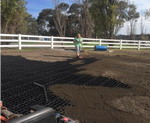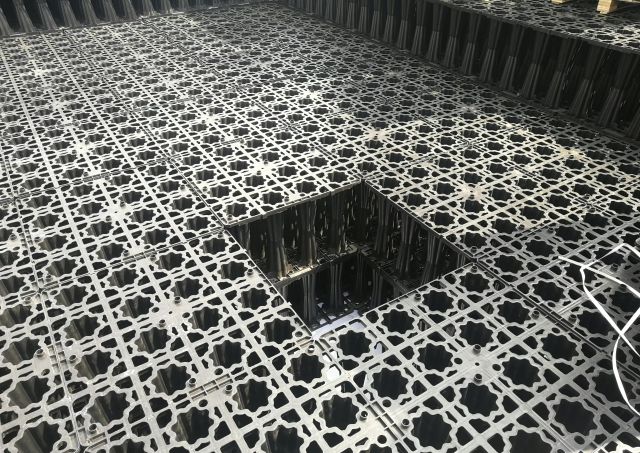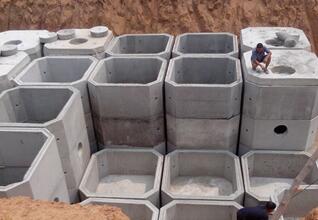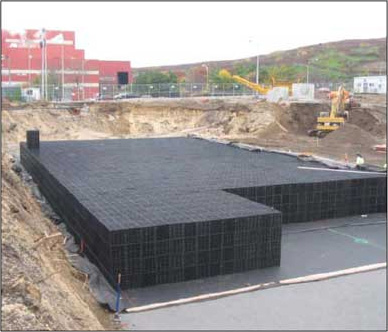Rainwater Harvesting Module Installation
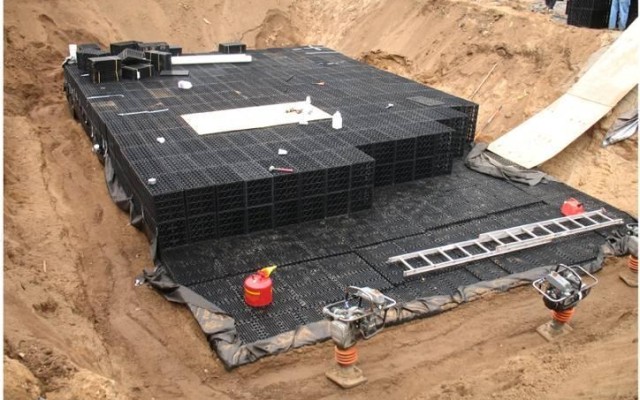
Step1: Excavate
Pay attention that the excavation digging area size, it should be larger than the size of rain tanks so that it can allow for the tank dimensions, sufficient backfill material and compaction equipment required during backfillings.
Step 2: Prepare base
Base material should be 95% compactable material such as sand or stone, if the design of the project incorporates infiltration of water into a sub-soil, base material should be sand or open-graded stone. If no infiltration is required, a more durable road base material can be used. Make sure the ground is plain enough.
Step 3: Fill sand
Fill it with sand to make the surface plain so that the completed tank modules can staged as close to the installation area as possible.
Step 4: Place geotextile
For most applications, the geotextile should be 150g/sqm of non-woven. Lay the geotextile into the excavation, over lapping edges by 300mm or as specified by the engineer. Ensure enough fabric on the ends to wrap over the rain tanks.
Step 5: Install the raintanks
Using a string line, establish two straight lines on one corner of the installations area and then filling all the rain tanks.
Step 6: Wrap tank in geotextile
Wrap geotextile place in step 4 over the rain tank units, creating fabric envelope around the rain tanks, completely sealing the system to keep backfill material out of the system. Make sure the textile covered tightly to the rain tanks;
Step 7: Back fill the soil;
When backfill reaches the top of the rain tank unites, begin covering the structure with backfill material. Exercise care when placing the first 150mm lift on rain tanks. Spread material using a lightweight powered mechanical complactor or roller.
The next 150mm lift may be placed using lightweight equipment with tracks. Place at least 500mm of material and blade down 300mm, where required, then compact to 95%.
Step 8: Make sure the installation is correct.




